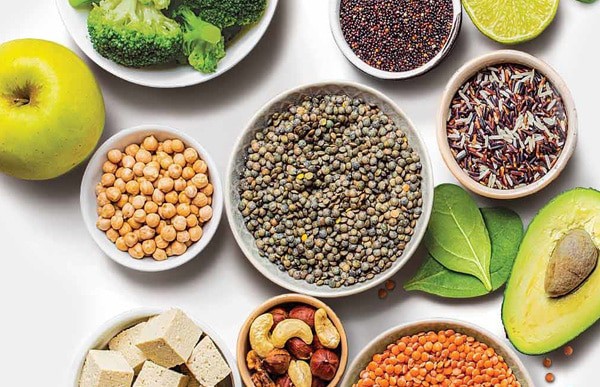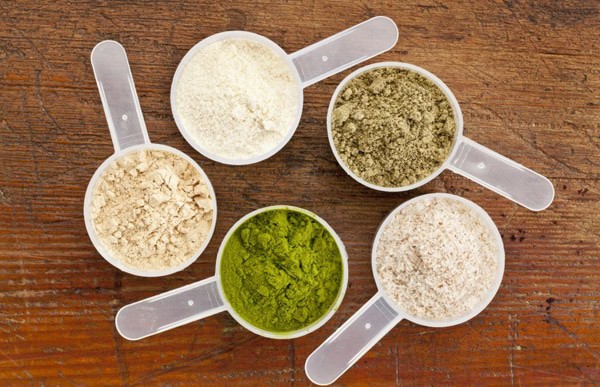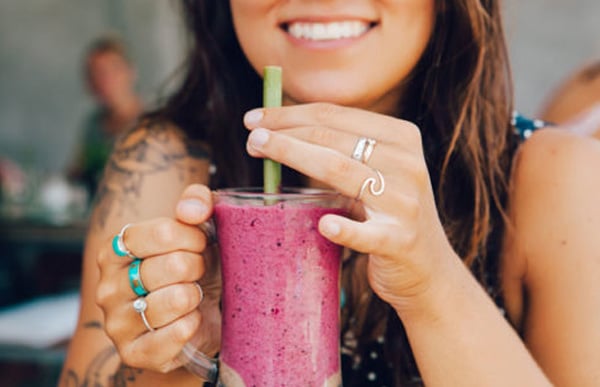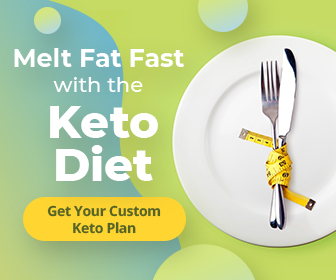Protein Needs

Essentially, everyone’s needs will be different in regards to protein intake based on activity level, but across the board, the RDA (or Recommended Daily Allowance) for protein is 0.8 grams per kilogram of body weight. This recommendation is taking into consideration overall bodily functions, and the amount of protein that one would need to consume in order to be healthy. Think of it as a minimum goal – and not exactly a specific total of how much you should eat during the day.
To break down this intake, look at it this way: take your weight in pounds and divide it by 2.2; this will give you your weight in kilograms. For example, if someone was 155 pounds and divided that by 2.2, the total would be 70.5 kilograms. From there, multiply by 0.8, and that equals 56 grams of protein that should (at least) be consumed each day for someone of that weight.
How to Eat Enough Protein

Even with these totals, it can be confusing – and oftentimes a challenge – to get in the full spectrum of protein intake during the day. Many people think that getting more protein means eating more meat…and you can most certainly reach your intake this way. However, there are other sources of protein that are high in quality and full of other nutrients that your body needs as well, such as nuts, avocados, pumpkin seeds, and certain vegetables.
With the hustle and bustle of life and hectic schedules, it can be difficult to be able to hit our macronutrient goals each day in order to stay healthy…and that’s where smoothies can come into play. Smoothies are an excellent way to incorporate protein into your diet, and can help round out a full nutrient-dense meal plan. And bonus – all you need is to have a great blender that can mix up all your ingredients at once; that way, you can be out the door and on your way with a healthy meal!
Get More Protein in Your Smoothies
Let’s look at several different ways that you can incorporate more protein into your smoothies, and satisfy your hunger while getting in the proper nutrients your body needs.
Almond Butter
A variation of the classic peanut butter, this nut butter contains a higher amount of essential fatty acids that the body needs…. however, don’t let this fool you! Almond butter contains heart healthy unsaturated fat, and plenty of calcium, magnesium, and iron. With four grams of protein in two tablespoons, almond butter packs a ton of protein into a small serving size…and because the serving is small, you can add more of it to your vanilla protein smoothie!
Chia seeds
These tiny black seeds contain high amounts of antioxidants and minerals, and contain over 16 grams of protein in 3.5 ounces. Also packing a punch with all of the essential amino acids – and therefore making chia seeds a high-quality protein choice – these little seeds are perfect for throwing into your chocolate protein smoothie to help keep you full!
Hemp seeds
Technically considered a nut, hemp seeds are a fantastic protein source, with over 25% of their overall calories coming from protein. Also known for being a great source of phosphorus and vitamin E, hemp seeds are a perfect plant-based protein source to put in your morning smoothie.
Greek yogurt
Considered to be much healthier that regular yogurt – and with the added nutritional benefits of probiotics and healthy gut bacteria – Greek yogurt is an excellent punch of protein to work into your smoothies! Along with having a hefty amount of calcium in each serving, Greek yogurt has almost twice as much protein as regular yogurt, and with less than half of the sugar.

Protein Powders
Made most often in the form of whey, pea, soy, or casein, protein powders are an excellent way to add complete proteins to your diet. Known for being a convenient and easy way to get your protein intake, protein powders can be added in with milk, water, or whatever liquid you’re using in your smoothie! Check out the 10 most popular protein powders here.
Quinoa
A touted gluten-free whole grain source, quinoa is high in protein (typically over 8 grams in one cup), and can be a tasty and filling way to add protein and fiber to your smoothie. If you’re using quinoa in a smoothie it can be cooked or uncooked, depending on your smoothie consistency preference.
Peanut butter powder
Often seen next to jars of actual peanut butter, peanut butter powder is basically crushed peanuts that have had their fats and oils removed. In the end, you’ll still get the taste of the peanut butter – but without all the added calories! PB2 is a great option, and will give you up to 6 grams of protein in 2 tablespoons…perfect for adding to your smoothie for some extra fuel!
Pumpkin seeds
Full of nutritional benefits, pumpkin seeds are high in both protein and fiber – both of which are necessary in order to feel full and maintain a healthy weight. You can blend pumpkin seeds up in your blender until they’re smooth, or sprinkle them on top as you’re headed out the door. With over 32 grams of protein in a 100-gram serving, pumpkin seeds are the perfect addition to your smoothie!

All of these ingredients can be mixed and matched together in order to create the perfect smoothie recipe – so go ahead and try different combinations! Remember that if you’re running low on time or ingredients, you can always substitute with a high-quality protein powder in your smoothie to get the full range of nutritional benefits. It’s always good to use food sources for your protein though – and all of these ingredients (and more) can help to keep you full, healthy, and powered throughout your day!
Get 21 Days Of Nutritionally Balanced Smoothies!
If you want a done-for-you smoothie plan with all the nutrients you body needs, check out the 21 Day Smoothie Diet Plan which includes a 3 day detox plan complete with shopping lists, recipes and more. Watch the short video below for more info.




